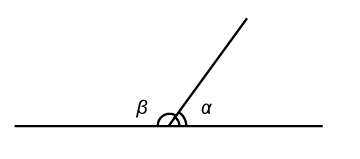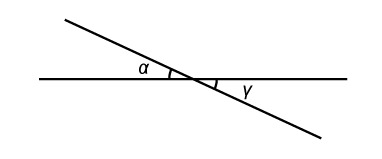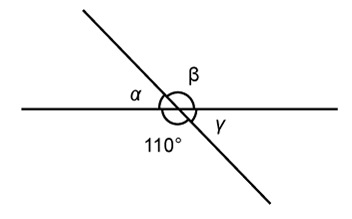4. Adjacent angles and opposite angles
Exercises
Definitions related to angles
- When two angles are adjacent to one another in such a way that their tips and sides align themselves and form a straight line, the angles are considered to be adjacent angles.
-
When two lines intersect, four angles are created at the point of intersection. Of these, the ones on opposite sides are called opposite angles, whereas the ones that are next to one another are called adjacent angles.
The sum of adjacent angles

The sum of adjacent angles is always [[$ 180° $]], as seen here:
[[$ \alpha + \beta = 180° $]]
The magnitude of opposite angles

Opposite angles are always equal, as seen here:
[[$ \alpha = \gamma $]]
Examples
Example 1
 Calculate the magnitude of the angle [[$ \alpha $]] .
Calculate the magnitude of the angle [[$ \alpha $]] .
The angles [[$ 120° $]] and [[$ \alpha $]] are adjacent angles, which means that [[$ \alpha = 180° -120° = 60° $]].
Example 2
Deduce the magnitudes of the unknown angles.

[[$ \begin{array} \\ \beta = 110° &\text{Angles} \beta \text{ and 110° are opposite angles.}\\ \alpha = 180° - 110° = 70° &\text{The sum of the adjacent angles is } 180°.\\ \gamma = \alpha = 70° & \text{Angles }\gamma \text{ ja } \alpha \text{ are opposite angles.} \\ \end{array} $]]